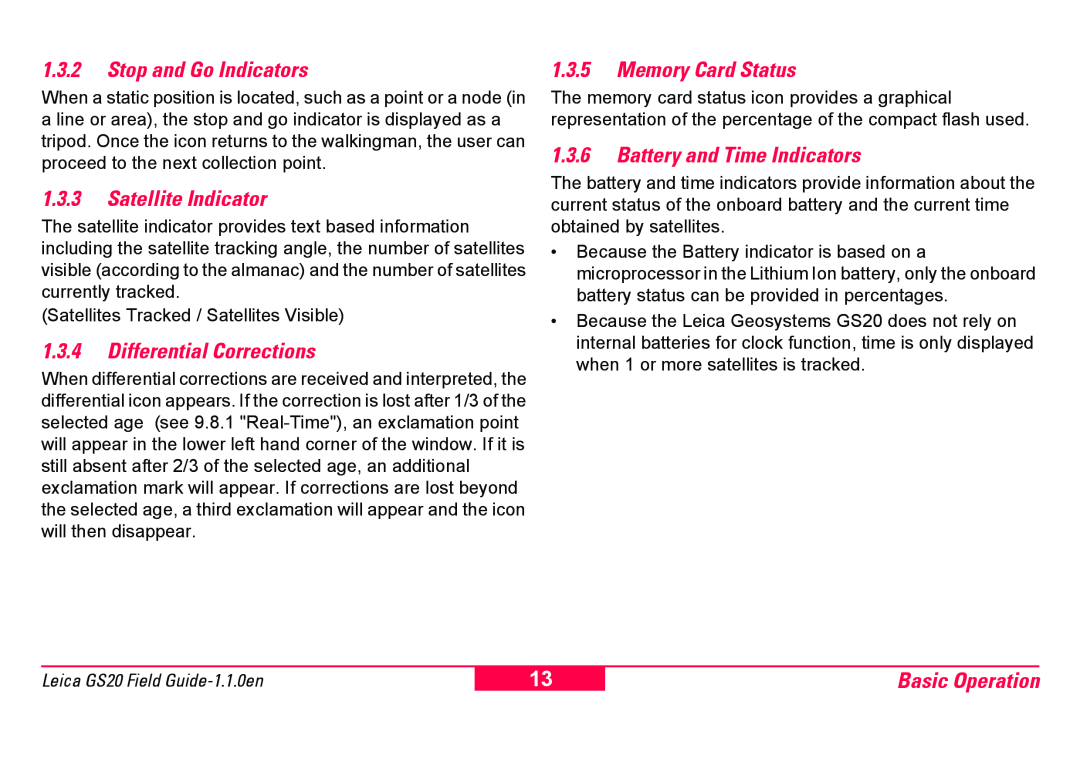1.3.2Stop and Go Indicators
When a static position is located, such as a point or a node (in a line or area), the stop and go indicator is displayed as a tripod. Once the icon returns to the walkingman, the user can proceed to the next collection point.
1.3.3Satellite Indicator
The satellite indicator provides text based information including the satellite tracking angle, the number of satellites visible (according to the almanac) and the number of satellites currently tracked.
(Satellites Tracked / Satellites Visible)
1.3.4Differential Corrections
When differential corrections are received and interpreted, the differential icon appears. If the correction is lost after 1/3 of the selected age (see 9.8.1
1.3.5Memory Card Status
The memory card status icon provides a graphical representation of the percentage of the compact flash used.
1.3.6Battery and Time Indicators
The battery and time indicators provide information about the current status of the onboard battery and the current time obtained by satellites.
•Because the Battery indicator is based on a microprocessor in the Lithium Ion battery, only the onboard battery status can be provided in percentages.
•Because the Leica Geosystems GS20 does not rely on internal batteries for clock function, time is only displayed when 1 or more satellites is tracked.
Leica GS20 Field
13
Basic Operation
